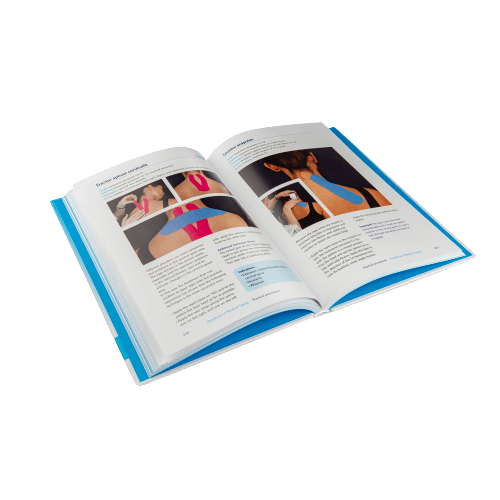Bursitis, particularly in the hip, can be a source of discomfort and pain, affecting daily activities and mobility. Bursae, small sacs filled with fluid, help cushion and reduce friction between bones, muscles, and tendons around the hip joint. When these sacs become inflamed, often due to overuse, injury, or underlying conditions, it can lead to hip bursitis. On this page, we’ll explore how kinesiology tape can be used as part of a comprehensive approach to alleviate pain, reduce inflammation, and support hip function for individuals dealing with this condition.
Symptoms of bursitis:
- Pressive, nagging pain at the side of the hip, thigh or buttock.
- Pain on palpation of the hip.
- Pain when moving the hip joint.
- Pain when sitting with legs crossed.
- Radiating pain to other parts of the body.
When the diagnosis has been established, kinesiology taping can be successfully used to support the physiotherapeutic treatment. The following taping applications are suitable for application.
Get started with these items to tape bursitis of the hip
-
CureTape® Classic Kinesiology Tape
Bestseller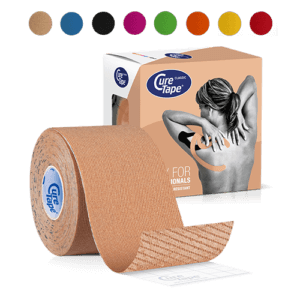 $19.95
In stockSelect options This product has multiple variants. The options may be chosen on the product page
$19.95
In stockSelect options This product has multiple variants. The options may be chosen on the product page -
CureTape® Sports Extra Sticky Kinesiology Tape
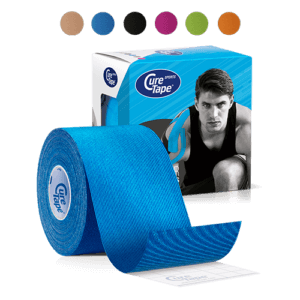 $21.95
In stockSelect options This product has multiple variants. The options may be chosen on the product page
$21.95
In stockSelect options This product has multiple variants. The options may be chosen on the product page -
CureTape® Art Printed Kinesiology Tape
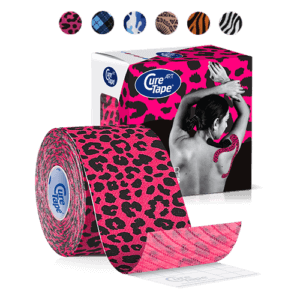 $21.95
In stockSelect options This product has multiple variants. The options may be chosen on the product page
$21.95
In stockSelect options This product has multiple variants. The options may be chosen on the product page -
Standard scissors
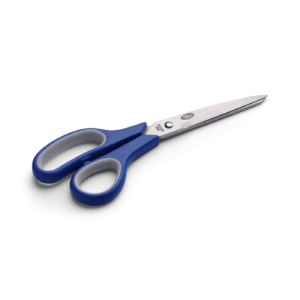 $14.95
In stockAdd to cart
$14.95
In stockAdd to cart
Option 1: Space technology
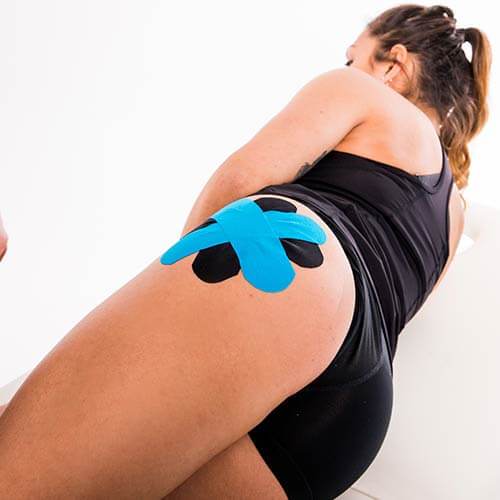
Cut four I strips and apply them to the bursa subtrochanterica (the inflamed hip bursa) using a ligament technique (gentle tension). The spacer technique creates space under the skin and provides pain relief. This tape application is experienced as supportive.
Option 2: Lymphatic technique
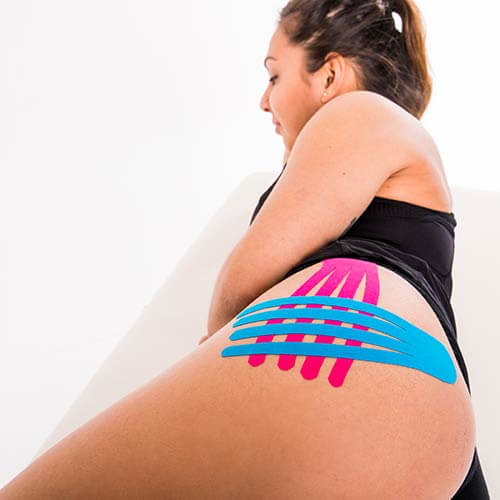
Cut two octopus-lymph fans and lay them crosswise to form a grid. The grids have a fluid draining effect.
Learn how to tape
Want to learn how to apply tape yourself*? Check out our manuals on taping:
- The Ultimate Taping Guide: Focuses on self-taping for the 30 most common injuries where taping provides support.
- Kinesiology Taping Method Manual: Designed for (para medical) professionals, covering basic taping techniques and various pathologies.
- Decompressive Taping Techniques Manual: Specifically focuses on lymphatic taping methods for decompression.
What are you waiting for? Order a copy today!
Who are we?
THYSOL is the manufacturer of the kinesiology tape brand CureTape. As CureTape, we have been training and supplying professionals for 25 years. And consumers now know how to find us too! By manufacturing all our tapes in our own factory, we can guarantee the best quality!
THYSOL is the manufacturer of the kinesiology tape brand CureTape. As CureTape, we have been training and supplying professionals for 25 years. And consumers now know how to find us too! By manufacturing all our tapes in our own factory, we can guarantee the best quality!
Disclaimer
Please note that the indicated tape applications and information on our website about the possibilities with kinesiology tape have not yet been scientifically proven. The statements and examples mentioned are based on long-term experiences of patients and trained therapists.Contraindications not to tape: pregnancy, open wounds, broken bones, unexplained complaints, allergies and skin diseases, use of medication such as blood thinners, thrombosis and fever. Always apply tape in consultation with a specialist.
Please note that the indicated tape applications and information on our website about the possibilities with kinesiology tape have not yet been scientifically proven. The statements and examples mentioned are based on long-term experiences of patients and trained therapists.Contraindications not to tape: pregnancy, open wounds, broken bones, unexplained complaints, allergies and skin diseases, use of medication such as blood thinners, thrombosis and fever. Always apply tape in consultation with a specialist.

